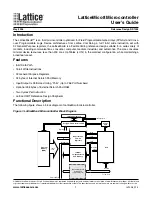
Parker Hannifin
The address consists of a network ID and a host ID. The network
ID acts as a general address, like a zip code; The host ID is the
address for a specific device within the network, like a home
address. Most IP addresses fall into one of the following address
classes:
•
Class A range. The first 8 bits are for the network ID; The
remaining 24 bits are for the host ID.
•
Class B range. The first 16 bits are for the network ID; The
remaining 16 bits are for the host ID.
•
Class C range. The first 24 bits are for the network ID; The
remaining 8 bits are for the host ID.
The number of bits used for the network ID determine how many
hosts a given address can support. Class A networks provide a
small number of network IDs but a very large number of host IDs.
And class C networks provide a huge number of network IDs but
a small number of host IDs.
Before a computer or router can send data, it has to identify the
network ID through the address class. Each class is assigned a
range of numbers.
Address
Class
First octet in dotted
decimal format
begins with
Excluded from Internet,
Allowed for Intranet
A
0 to 127
10.0.0.0 to
10.255.255.255
127.0.0.0 to
127.255.255.255
B
128 to 191
172.16.0.0 to
172.31.255.255
C
192 to 223
192.168.0.0 to
192.168.255.255
Certain IP addresses have particular meanings and are not
assigned to host devices.
•
Using zeroes as a host ID signifies the entire network. For
example, the IP address of 192.168.0.0 indicates network
192.168 where specific hosts can be found.
•
Using 255 in an octet indicates a broadcast, where data is
sent to all host devices on a network. For example, the IP
Address 192.168.255.255 will broadcast data to all host
devices in that network.
168 Programmer’s Guide








































